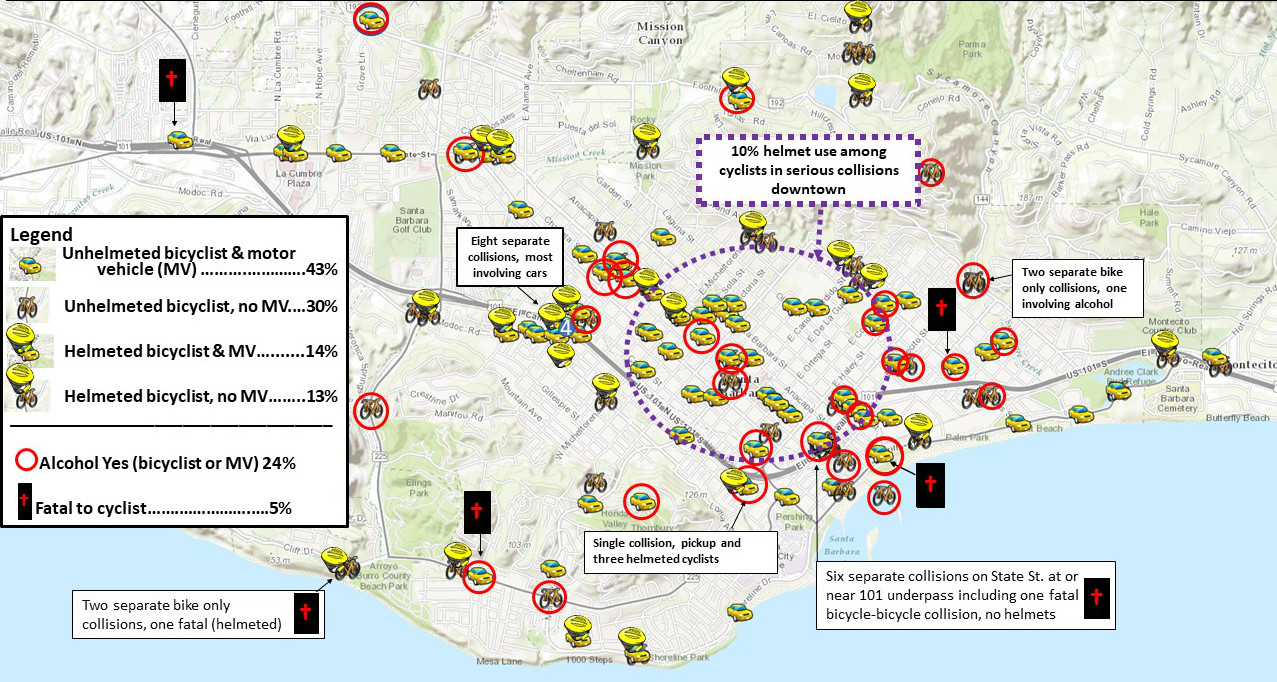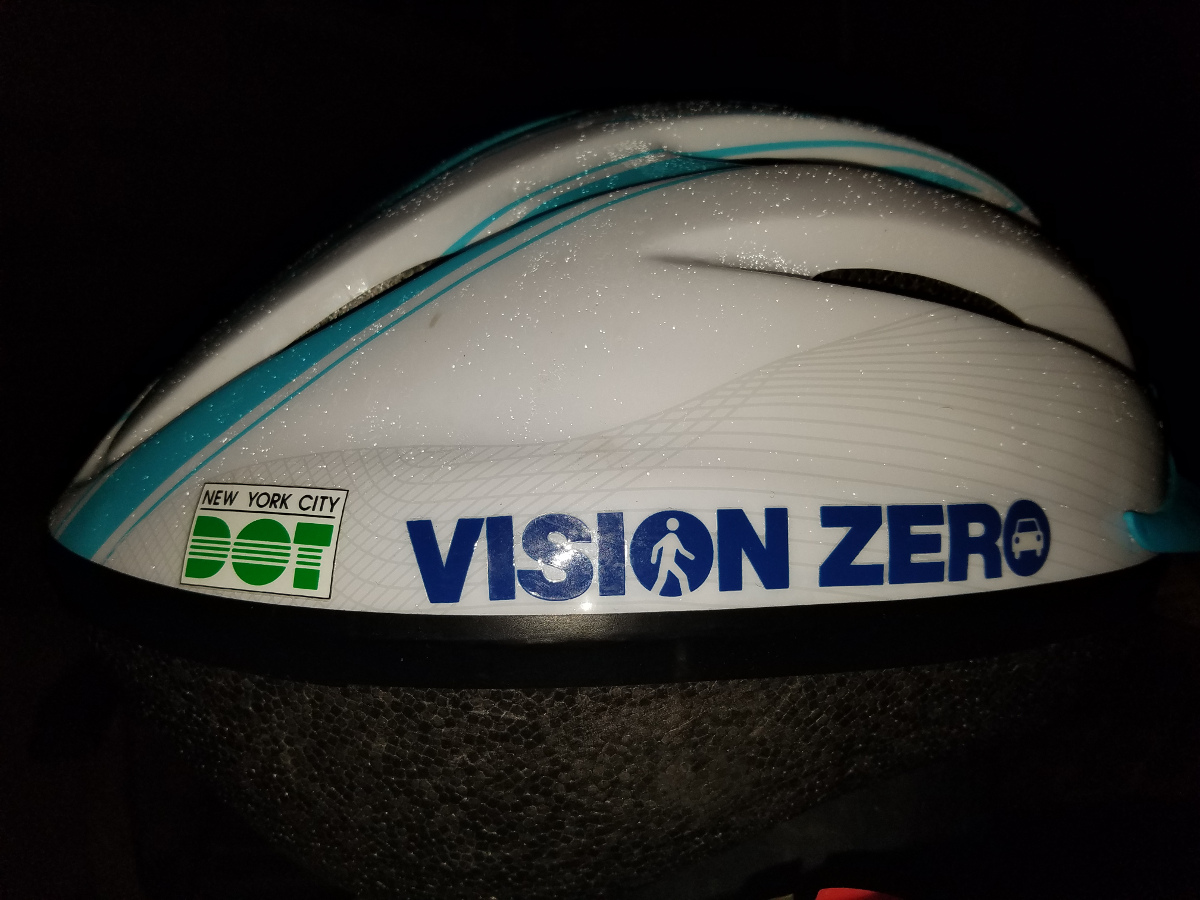Vision Zero Santa Barbara
Half-Baked or Ready for Prime Time?

Vision Zero is an international initiative aimed at eliminating fatal and severe injuries associated with transportation (in motor vehicles, by bicycle, or while walking). In late 2016, the Santa Barbara City Council voted to become a “Vision Zero City.” City staff have now prepared a strategy to implement Vision Zero. The strategy will be voted on by the City Council on Tuesday, September 11.
While we support the concept of Vision Zero, we want to suggest some simple modifications to the strategy that would greatly improve its effectiveness, transparency, and evaluation of its benefits over time. We are concerned because, as happened with Santa Barbara’s Bicycle Master Plan, we may be jumping into a decades-long process during which the public may be left in the dark about both process, progress, and benefits.
Highly cost-effective steps that would improve the strategy include:
Laws. It should be acknowledged that most of the success of technologies to reduce transportation-related deaths and injuries has been due to passage and enforcement of laws. When the strategy discusses speed limits, it fails to point out that reducing speed limits is the most important goal but that California laws may not permit this.

Include “inconvenient” deaths. A number of transportation deaths and many severe injuries, some which ultimately prove fatal, are excluded from the strategy, presumably because they were not reported to law enforcement. However, they are reported to public health officials. Without efforts to involve the public health community, the city can never be certain that its Vision Zero statistics — and more importantly its strategies — reflect the complete picture.
For just such reasons, Vision Zero San Francisco developed a standardized protocol for transportation fatality investigation and reporting. It fostered improved tracking of progress and the development of corrective strategies in conjunction with stakeholders outside of the government.
Informing and involving the public is an important part of Vision Zero, in Nashville, Tennessee, a pedestrian death registry (including where and how such deaths occur) and the United Kingdom.
Objective measures of success. The city’s strategy lacks a statistically valid measure of success, an essential component of Vision Zero proposals. The 10-year average of deaths and serious injuries is its only metric, but, like the objectives of the Bicycle Master Plan, changes will be nearly impossible to interpret scientifically.
More robust measure of the strategy’s effectiveness would be reductions in the total number of alcohol-involved injury collisions or total number of transportation-related injuries (although this is already trending downward, see below). For both measures, a roughly 20 percent decrease would be an important and statistically significant accomplishment.
Bicycle helmet use is not mentioned in the plan. The scientific literature is clear that bicycle helmets save lives and protect against injuries in all age groups. A recent study conducted as part of New York City’s successful Vision Zero Program found that helmets greatly decrease the severity of head injuries and associated medical costs. The city therefore provides helmets at no cost.

Los Angeles’ Vision Zero program uses of bicycle helmets as incentives to engage the public and improve safety.
Multidisciplinary Collaboration. Traditionally, cities have tracked transportation-related injuries and deaths with little technical collaboration from organizations outside of government. But according to the World Health Organization, Vision Zero requires a multidisciplinary approach that involves the public health community and the general public.
In Santa Barbara, information about transportation-related deaths and serious injury becomes publicly available only when and if noted by the news media or eight months after an incident, when SWITRS (Statewide Integrated Traffic Records System) data is finalized. Incomplete or delayed reporting leads to missed opportunities to educate the public, and the lack of public input can result in flawed or incomplete interpretation of incidents.
The value of such collaboration with the public is illustrated by a report of the deaths of two pedestrians on Las Positas in 2010 due to hit and run. However, based on the experience of one of us as a first responder at the scene, additional investigation revealed that the pedestrian victims were returning from an event at Earl Warren Showgrounds under the influence of alcohol, and the driver of the car was deemed not negligent. There are many lessons from this tragedy, and no single corrective strategy would suffice.
To increase awareness the city could use Nixle or Instagram accounts to inform the community about transportation-associated deaths and serious injuries in near real time. Better graphics provides clearer information. The city could collaborate with news media to publish simple but informative tables on the circumstances surrounding transportation deaths and injuries. Rather than heat maps combining locations of all types of collisions, separate maps of bicycle and pedestrian deaths and injuries could provide information on the locations of greatest danger for each mode of travel.
Conclusions. The current strategy is a worthwhile but flawed attempt to realize a laudatory goal. It can and should be improved by adding a few simple low-cost strategies such as those discussed in this article. If the city needs additional assistance but can’t afford it, we suggest review by public health and legal experts in the community.



